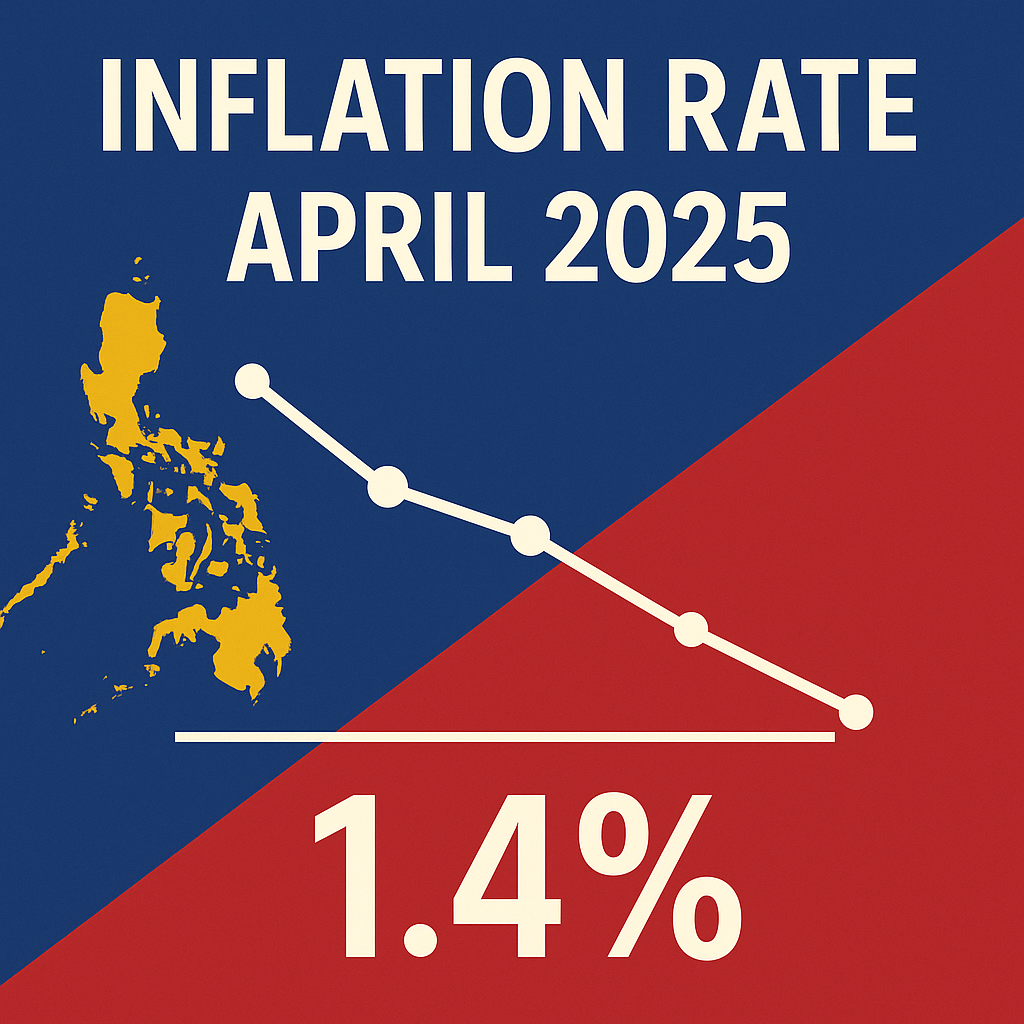Philippine Inflation Hits 1.4% in April 2025: What It Means for You
In April 2025, the Philippines’ inflation rate dropped to 1.4%, the lowest in over five years. This decline, from 1.8% in March, was primarily due to significant decreases in food and transport costs. Here’s a breakdown of what this means for consumers and the economy.
Key Drivers of the Decline
- Food Prices: Rice prices fell by 10.9% year-on-year, a sharper decline than March’s 7.7%. This contributed significantly to the overall decrease in food inflation, which eased to 0.7% in April from 2.3% in March. SunStar Publishing Inc.+3DZRH News+3BusinessWorld+3
- Transport Costs: Transport inflation decreased by 2.1% in April, compared to a 1.1% drop in March. Lower fuel prices played a major role in this reduction. DZRH News
Impact on Core Inflation
Core inflation, which excludes volatile items like food and energy, remained steady at 2.2% in April. This stability suggests that underlying inflationary pressures are subdued, providing the Bangko Sentral ng Pilipinas (BSP) with more flexibility in its monetary policy decisions. Reuters
Regional Variations
- National Capital Region (NCR): Inflation in NCR rose to 2.4% in April from 2.1% in March, mainly due to higher costs in housing, water, electricity, gas, and other fuels. BusinessWorld
- Other Regions: Regions outside NCR generally experienced lower inflation rates. For instance, Region 9 (Zamboanga Peninsula) registered a zero percent inflation rate in April, down from 0.6% in March. SunStar Publishing Inc.
Effects on Low-Income Households
For the bottom 30% income households, inflation slowed to 0.1% in April from 1.1% in March. This deceleration was mainly due to reduced prices in food and non-alcoholic beverages, offering some relief to the most vulnerable segments of the population. Philippine Statistics Authority
Economic Implications
The continued decline in inflation provides the BSP with room to adopt a more accommodative monetary policy stance. In response to the favorable inflation environment, the central bank resumed its easing cycle last month, cutting its key policy rate by 25 basis points to 5.5%. Further gradual cuts have been suggested to support the economy amid global uncertainties. Reuters
Wrap-up
The significant drop in the Philippines’ inflation rate in April 2025 reflects easing price pressures, particularly in essential commodities like food and transport. While regional variations exist, the overall trend supports a more flexible monetary policy approach by the BSP. Continued monitoring of inflation drivers and proactive policy measures will be crucial in sustaining economic stability and growth.
